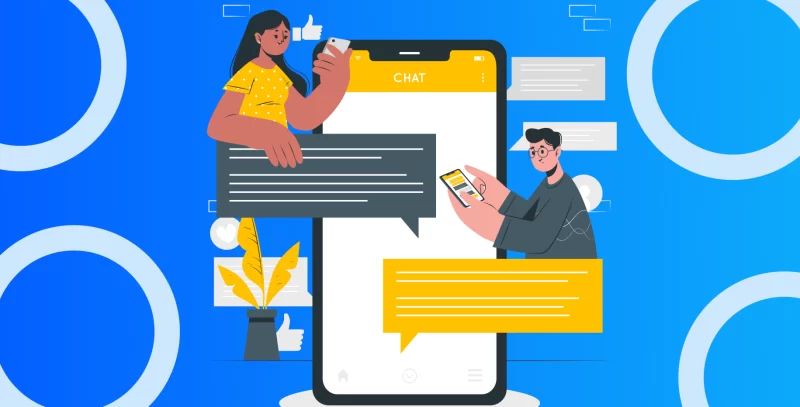
Chat Support: Do’s and Don’ts
Making your customers happy through first-rate customer service (CX) is essential for your company’s progress. Genuinely excellent customer service goes above and beyond merely fixing issues or answering questions quickly, the experience should be easy and pleasant for the customers. Today, customers demand more from businesses than the limited alternatives of telephonic support or walk-in locations.
Online options are far more popular as technology has altered social interactions. One strategy is integrating a live chat system with your existing enterprise email and social media management platforms. If put to good use, it can be a beneficial resource. Here are some dos and don’ts for excellent chat support:
The Do’s of Chat Support
- Be Quick with Your Communication
Clients that use live chat support want prompt responses—the shorter the average wait time for answers, the better the customer experience. Companies should aim to respond to clients in under a minute.
Customer service priority number one when suffering delays should be communicating with customers. Knowing how long it takes to get a response will alleviate some of the waiting around that causes a lot of irritation. If they receive an automatic message informing them that “you are third in queue,” they are more likely to remain connected rather than give up and leave. Using a typing indication might also be influential.
- Build a Relationship with the Customer
After a tailored encounter, customers are more likely to make a purchase. Businesses can increase client engagement by providing a more personalized experience. This is best accomplished through real-time chat.
Having a ‘pre-chat’ feature is a straightforward method to guarantee a customized approach. Customer can enter their contact information and the nature of their inquiry. Businesses with quirky greeting messages work wonders for already exhausted and fatigued customers.
- Know the Customer’s Language and Culture
Customers are pleasantly surprised and appreciate it when issues are resolved by those who speak their own language. Many potential online stores’ target demographics are global. Helping customers in a timely and effective manner via live chat requires a deep understanding of the audience’s language and cultural norms.
While it’s unrealistic to expect agents to be fluent in every language, it is crucial to have agents who can communicate in the native tongue of every country in which businesses operate.
The Don’ts of Chat Support
- Never Make Too Many Agents Switches
Businesses should keep each query to a single agent at a time. Of course, first-line support employees might not be able to handle the most complicated inquiries without help from a supervisor or a tech guru.
Passing the buck here requires a transparent handoff and prompt action on their part. The automated closure of live chats due to consumer inactivity is a common source of customer complaints. To prevent this from happening as agents wait for a response, businesses should not transfer them while engaged in a conversation.
- Act Too Rehearsed
Try not to rely too heavily on automated chat programs. Salespeople should be free to ask broad questions, while technical support representatives should be allowed to ask specific, in-depth questions. Communication should be accessible. It’s not that agents shouldn’t have a script to follow, but they should have the freedom to deviate when necessary.
- Spin it Into a Persuasive Argument
There is a live chat feature for any queries or concerns. The customer’s needs must be the primary emphasis of any conversation, not the sales pitch. Although upselling and cross-selling are always viable options, they require cautious execution.
Agents need to know when it’s appropriate to suggest complementary offerings and when it’s ideal for focusing solely on answering the initial question. Professional chat support services might help businesses find agents who upsell and convert prospects.
- Miscommunicate or Overcommunicate
It’s up to the business to determine if the live chat will be available solely during business hours or if it will be available around the clock. An agent must be general (or replaced with a chatbot) whenever a business chooses.
Companies must make it evident on their website what times they are accessible. This should also be made clear by the chatbot if they are utilizing one. Organizations can also outsource call center services to find professional help so that they do not have to think about the dos and don’ts of chat support.
The Conclusion
Considering this, real-time communication is something businesses should consider. Live chat may either strengthen consumer loyalty and boost the brand’s reputation or completely turn them off and cause them never to return. A live chat feature is useless if no one knows it exists.
Make sure to spread the word via the organization’s various online platforms and promotional efforts. Locating the chat app in real time should be simple. This can involve a reduced pop-up on each page, or it might have its part on the “contact us” page.
Finally, keep in mind that one of the main advantages of live chat is the convenience of having instantaneous access to consumer information.

